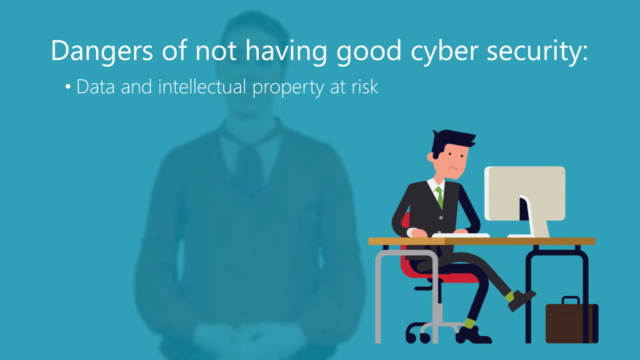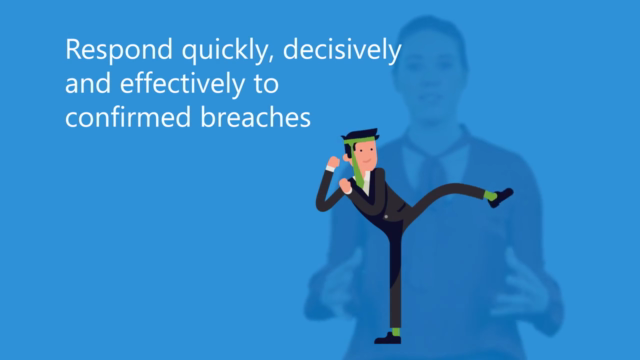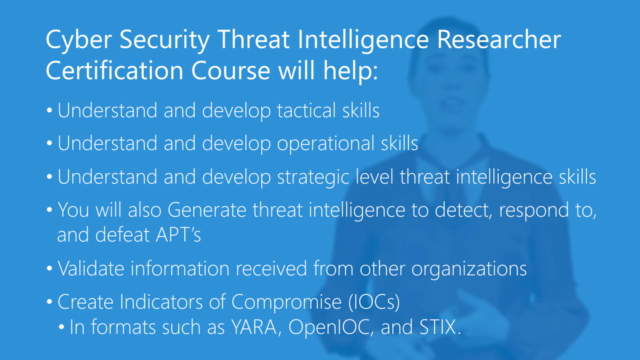Cyber Security Threat Intelligence Researcher Preview
Learn to intelligently detect and take down cyber threats
4.32 (1913 reviews)

48,609
students
1.5 hours
content
Feb 2017
last update
FREE
regular price
What you will learn
a high level overview of the 7 threat intelligence phases
Hunting - The goal of hunting is to establish techniques to collect samples from different sources that help to start profiling malicious threat actors.
Features Extraction - goal of Features Extraction is to identify unique Static features in the binaries that help to classify them into a specific malicious group.
Behavior Extraction - The goal of Behavior Extraction is to identify unique Dynamic features in the binaries that help to classify them into a specific malicious group.
Clustering and Correlation - The goal of Clustering and Correlation is to classify malware based on Features and Behavior extracted and correlate the information to understand the attack flow.
Threat Actor Attribution - The goal of Threat Actors is to locate the threat actors behind the malicious clusters identified.
Tracking - The goal of tracking is to anticipate new attacks and identify new variants proactively.
Taking Down - The goal of Taking down is to Dismantled Organized Crime Operations.
Screenshots




Related Topics
1109980
udemy ID
2/11/2017
course created date
7/5/2019
course indexed date
Bot
course submited by